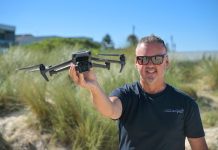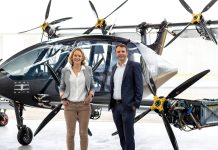An unmanned single-engine cargo plane has made its maiden flight in the northwest Chinese province of Shaanxi.
According to a report from the Chinese newsagency Xinhua, the AT200, China’s heaviest unmanned aerial vehicle, can land and take off automatically within 200 metres. The aircraft has a top speed of about 170 knots and a payload of 1.5 tonnes. It is proposed that the aircraft be used to carry freight to mountainous regions and islands.
A video of the test flight, posted on Facebook by Pacific Aerospace, says that the AT200 is equipped with advanced flight controls and command systems which enable it to fly without a pilot. The video shows three operators sitting in a control room.
The AT200 is based on Pacific Aerospace’s New Zealand-built PAC P-750 XSTOL, a single-engine turboprop first manufactured in 2001. The type was originally designed for parachuting, able to take a load of skydivers to 12,000 feet and return to land in about 10 minutes. It has since received ICAO certification for single engine IFR commercial passenger transport operations.
The type is produced in China under licence, but a P-750, originally sold to a Chinese company in September 2015, was seen at a North Korean airshow last year. While Pacific Aerospace’s CEO expressed surprise about the sighting, the company has since pleaded guilty to charges relating to a breach of UN sanctions by supplying spare parts in the knowledge that they were for the aircraft in North Korea.
The concept of remotely piloting an aircraft originally designed for a human crew is not new. In July 2016 in an article on optionally piloted aircraft entitled ‘Part-time pilot: the future of aerial work?’, Flight Safety Australia predicted the type of operation demonstrated in China and gave examples of military and civilian optionally piloted aircraft, such as the Sikorsky Black Hawk and the Centaur—a converted Diamond DA-42. The articles states, ‘Like unmanned aircraft, optionally piloted aircraft can reduce the cost and risk of conducting maritime, coastal and border patrol, observation in contaminated areas, or bushfire surveillance. Optionally piloted aircraft typically fly longer and higher when the cockpit is relieved of the weight of a person and their associated life-support systems. However, some missions, such as flight in controlled airspace under current regulations, still require a human pilot.’




